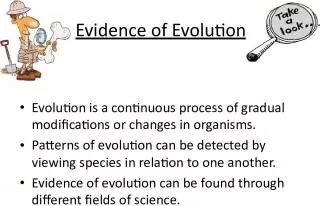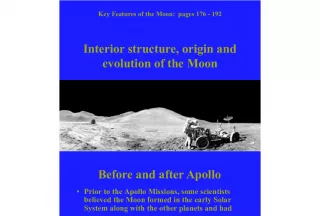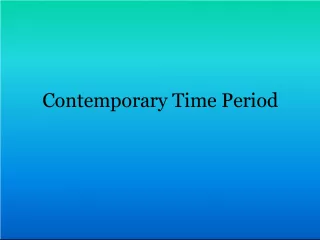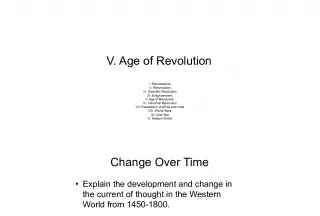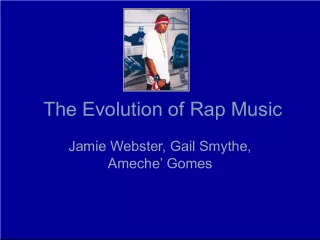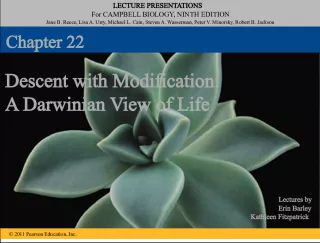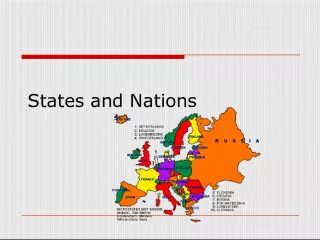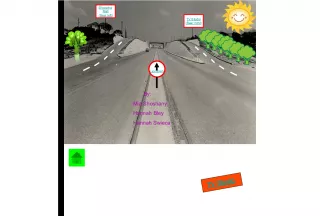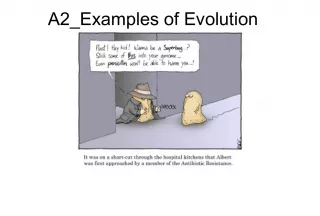The Evolution of Journalism
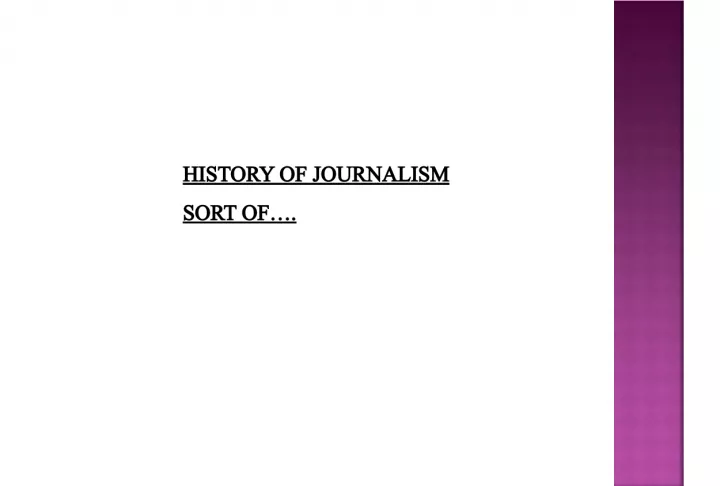

From early forms of news reporting by humans and animals to Gutenberg's invention of movable type, journalism has come a long way in terms of speed and accessibility.
- Uploaded on | 7 Views
-
 enriquewelch
enriquewelch
About The Evolution of Journalism
PowerPoint presentation about 'The Evolution of Journalism'. This presentation describes the topic on From early forms of news reporting by humans and animals to Gutenberg's invention of movable type, journalism has come a long way in terms of speed and accessibility.. The key topics included in this slideshow are . Download this presentation absolutely free.
Presentation Transcript
1. HISTORY OF JOURNALISM SORT OF….
2. News reporting goes back thousands of years, perhaps to the first humans or even the first animals that could communicate to one another about such things as approaching predators.
3. 15 century German inventor Johannes Gutenberg's development of movable type gave people a relatively fast, inexpensive means of producing hundreds or thousands of fliers, books, and eventually newspapers.
4. Shortly after English settlers set up colonies First Press: Cambridge, Massachusetts, in the late 1630s. The American colonies did not produce their own real newspaper until the 18th century. Colonists in Massachusetts were preoccupied with survival.
5. Newspapers have not always been the sophisticated, full-color extravaganzas we know today. American journalism had its humble beginnings in the Colonial period with the publication of Benjamin Harris’ Publick Occurrences Both Forreign and Domestick, which was shut down after its one and only issue on Sept. 26, 1690.
6. This newspaper was printed on three sheets of stationery- size paper and the fourth page was left blank so that readers could add their own news before passing it on to someone else.
7. colonial newspapers small publications out-of-date four pages government and foreign affairs, the weather, disasters Illustrations were rare, headlines were nonexistent.
8. Journalists, for the most part, simply stayed out of trouble by printing innocuous coverage or even giving government officials the chance to approve material before publication. Things changed somewhat when James Franklin, brother of Benjamin, established the New England Courant in 1721.
9. The Courant was the first American newspaper to challenge the authority High literary quality and typeset. Franklin challenged religious and political authorities, setting a precedent The press was not free yet. however, Paper was shut down two years later.
10. Perhaps the most famous name in early American journalism is that of Peter Zenger. Publisher of the New York Weekly Journal, Zenger was charged with sedition after his paper had criticized colonial authorities, and he was tried for libel against the colonial British government in 1735. In this picture, Zenger is arrested and his printing press is burned by Colonial authorities.
11. ZENGER WAS FOUND INNOCENT THE BEGINNING OF THE FREE PRESS
12. Mechanical advancements provided cheaper printing methods and larger quantity Population growth caused increase in the number of newspapers Three times as many newspapers in the United States in 1833 as in England or France (larger proportion by 1860) Steam power increases the speed by which news travels (Ships and trains) Steam powered presses can print up to 4,000 copies an hour
13. INVENTION OF THE TELEGRAPH
14. Abraham Lincoln became the first president to direct armies in the field directly from the White House.
15. During the darkest days of the terrible war Lincoln would pace back and forth in the telegraph office awaiting news of the fate of the nation that would emerge from the new telegraph invention.
16. Because the telegraph wires kept going down on a regular basis, sometimes the story that a reporter was trying to send got cut off before it was finished.
17. To alleviate this situation, reporters developed the “inverted pyramid” form of writing, putting the most important facts at the beginning of the story.
18. Newspapers began to evolve and grow into a major industry. Men mostly dominated the field, but in 1868 the New York Sun hired their first female reporter, Emily Verdery Bettey. The Sun hired Eleanor Hoyt Brainerd as a reporter and fashion editor in the 1880s; she was one of the first professional female editors, and perhaps the first full-time fashion editor, of any American newspaper.
19. COMPETITION EMERGES: TO INCREASE CIRCULATION HEARST AND PULITIZER: 1890
20. STARTED COMIC STRIPS SENSATIONALIZED NEWS EXAGGERATIONS
21. After William Randolph Hearst moved to New York, he and Joseph Pulitzer competed for readers by making their papers more and more sensational.
22. In 1895, Hearst purchased the New York Morning Journal and entered into a head-to-head circulation war with his former mentor, Joseph Pulitzer, owner of the New York World.
23. To increase circulation both started to include articles about the Cuban Insurrection. Many stories in both newspaper greatly exaggerated their claims to make the stories more sensational.
24. The American public purchased more newspapers because of the sensational writing, and this strongly encouraged Hearst and Pulitzer’s newspapers to write more sensationalized stories.
25. BEGIN: YELLOW JOURNALISM
26. Drawn by R.F. Outcault, the popular (if now-unfunny) strip became a prize in the struggle between Pulitzer and Hearst in the New York newspaper wars.
27. Outcault moved the strip to Hearst's papers after nine months, where it competed with a Pulitzer-sponsored version of itself.
28. Muckrakers are journalists who seek out and expose the misconduct of prominent people or of high-profile organizations. Emerged late 1800s and early 1900s. Crusaders for social change, injustices or abuses
29. One of the most popular reporters of era was a woman named Elizabeth Cochrane who wrote under the name “Nellie Bly.” She wrote with anger and compassion. She wrote to expose the many wrongs that developed in nineteenth century cities after the industrial boom. Most of her reporting was on women.
30. She got a job on the Pittsburgh Dispatch when she wrote a furious letter complaining about an editorial that claimed that women were good for little but housework. She covered social questions such as divorce, slum life, and conditions in Mexico for the paper.
31. In 1887 she moved to Joseph Pulitzer's New York World, for which she exposed the conditions in which the insane lived by pretending to be mad and getting herself committed to the asylum on Blackwell's Island. She also investigated sweat-shops tenements, the world of petty crime and Corps de Ballet by the same methods.
32. Journalism does not stop with newspapers…
33. Upton Sinclair is actually responsible for the journalist term Muckracker when he brought about important changes in American society.
34. In short, "The Jungle" did as much as any animal-rights activist of today to turn Americans into vegetarians. But it did more than that. Within months, the aroused -- and gagging -- public demanded sweeping reforms in the meat industry. President Theodore Roosevelt was sickened after reading an advance copy. He called upon Congress to pass a law establishing the Food and Drug Administration and, for the first time, setting up federal inspection standards for meat.
35. Roosevelt was so taken with Sinclair that he coined the term “muckrakers” to describe him and other reformist crusaders, even though the president’s phrase was not meant to be wholly complimentary.
36. “I aimed at the public's heart, and by accident I hit it in the stomach.“ First American author to win Nobel prize
37. Magazines are also an important part of journalism, and Henry Luce is an important name in the magazine industry.
38. Luce, who once held the role of a newspaper reporter, broke away from the world of newspaper. He is the founder of Time magazine, Fortune , Life and Sports Illustrated ! With the exception of Life , these magazines are still in high circulation today!
39. As the U.S. population in the latter half of the 20th century has shifted from cities to suburbs, and with the growth in competition from other media, many large city newspapers have had to cease publication, merge with their competitors, or be taken over by a chain of newspaper publishers such as the Gannett Company or Knight-Ridder Inc.
40. In 1982, using satellite transmission and color presses, the Gannett chain established a new national newspaper, USA Today, published and circulated throughout the United States, Europe, and Asia.
41. The Wall Street Journal, the New York Times, and USA Today are read all over the country; small towns and rural districts usually have daily or weekly local papers made up largely of syndicated matter, with a page or two of local news and editorials. These local papers are frequently influential political organs.
42. As the U.S. population in the latter half of the 20th century has shifted from cities to suburbs, and with the growth in competition from other media, many large city newspapers have had to cease publication, merge with their competitors, or be taken over by a chain of newspaper publishers such as the Gannett Company or Knight-Ridder Inc.
43. Since the invention of the telegraph, which enormously facilitated the rapid gathering of news, the great news agencies, such as Reuters in England, Agence France-Presse in France, and Associated Press and United Press International in the United States, have sold their services to newspapers and to their associate members.
44. Improvements in photocomposition and in printing (especially the web offset press), have enhanced the quality of print and made possible the publication of huge editions at great speed. Modern newspapers are supported primarily by the sale of advertising space. Computer technology has also had an enormous impact on the production of news and newspapers.
45. By the 1990s this technology had also affected the nature of newspapers, as the first independent on-line daily appeared on the Internet. By the decade's end some 700 papers had web sites, some of which carried news gathered by their own staffs, and papers regularly scooped themselves by publishing electronically before the print edition appeared.
46.

